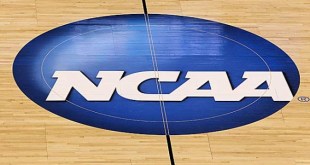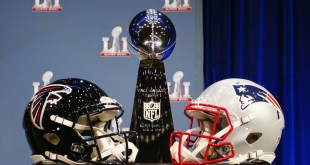Tweet
On September 8, 2014, a former exotic dancer named Jana Weckerly filed a civil suit in the 134th District Court in Dallas County, Texas against Jerry Jones and the Dallas Cowboys. In detail that borders on graphic for a legal document, Weckerly alleges in her suit that Jerry Jones touched Weckerley’s genitals, fondled her breasts, forced her to touch or rub his penis, and forced her to watch while Jones received oral sex from another woman.
In case you forgot, it’s been a rough couple of weeks for the NFL off the field. Ray Rice…Greg Hardy…Adrian Peterson…all being accused of doing some pretty awful stuff. Amidst the evidence of beating women and whipping children, Weckerly’s allegations against Jones and the Cowboys have largely slipped from the headlines. Maybe that’s because the allegations against Jones don’t affect fantasy football owners all over the country, or because these allegations are civil rather than criminal. Whatever the reason, this is a saga that is definitely worth following.
A Little Background
The background for this case is equal parts strange, creepy, and oddly compelling. On August 4, photos of Jerry Jones with two women in sexually suggestive positions surfaced on the internet. They were posted by a man named Frank Hoover, who allegedly worked in the entertainment technology industry in Dallas and was known to attend parties with Cowboys and Mavericks players. Hoover posted the pictures as part of a 20-page manifesto directed to Jerry Jones which describes a plot masterminded by Hoover’s former criminal associate, Kevion Hickman (aka “24K”), to use the photos to extort millions of dollars from Jones. Hoover explains that he found out about the plot in June 2011, and downloaded the photos from 24K’s hard drive onto a USB drive before destroying the hard drive. He says he attempted to meet with Jones’ attorney, Levi McCathern, to provide evidence of the extortion plot and request protection from those involved. The manifesto details the co-conspirators in the extortion plot, naming Jana Weckerly as the woman who took the photos of Jones and the two women. A more detailed summary of the manifesto can be found here.
Oh, and did I mentioned that Hoover claims in his manifesto to be the son of God, and that he was sent to help Jerry Jones? I’m being serious. In fact, most of the manifesto is dedicated to an explanation of why he is the son of God. There are many gems, but here are a few of my favorite:
“It may scare you, but you have to believe in who I am. I know this because I am the Son of God and he sent me to you. Jerry, you and the Cowboys are the Star we will use to Light My Path.
“I am the way, the truth and Jerry, you are my light.”
But I digress…this article is about the lawsuit Jana Weckerly filed against Jerry Jones and the Dallas Cowboys, and that is what I’ll focus on, no matter how insanely interesting the backstory is.
Statute of Limitations
The biggest obstacle that Weckerly and her attorney face is the statute of limitations. In Texas, the deadline for a person to file suit for personal injury resulting from sexual assault is five (5) years.[i] Weckerly’s lawsuit alleges that Jones sexually assaulted her “[s]ometime in May or June 2009”. Since five years and roughly 2-4 months had already passed when Weckerly filed her suit on September 8, it would stand to reason that Weckerly’s claims will be dismissed because the statute of limitations period has passed, right? Well, not so fast…as with everything in law and life, there are exceptions.
First, Texas law allows for a statute of limitations to be “tolled”, or delayed, if a person entitled to bring a lawsuit is of “unsound mind” during the limitations period.[ii] Thomas Bowers, Weckerly’s attorney, could attempt to prove that Weckerly was of unsound mind for at least 2-4 months between when the alleged sexual assault occurred and when the suit was filed, thereby suspending the statute of limitations for the 2-4 months necessary to protect the suit from dismissal. Texas law is vague on what constitutes “unsound mind,” but Weckerly would generally need to show that she was incapable of making major decisions in her life. She alleged in her suit that she suffered severe emotional issues as a result of the incident with Jones, which suggests she will make this argument.
Second, a potential defendant’s temporary absence from Texas suspends the running of the statute of limitations for the amount of time that the defendant is out of state.[iii] This means that Bowers could argue Jerry Jones spent 2-4 months or more from May 2009 to September 8, 2014 outside of Texas, and that time should not count towards the statute of limitations period. In fact, Weckerly recently amended her lawsuit to allege that Jones has been out of the state for at least 121 days in the past five years.
Jones’s attorney responded by submitting case law to the court which suggests that “intermittent excursions” outside the state do not suspend the statute of limitations. What constitutes intermittent excursions? It is likely that vacations and other leisure travel will not delay the limitations period, but business travel might. If that is the case, then Bowers could point to the several weeks Jones spends each year in Oxnard, California for the Cowboys’ training camp.
Judge Dale Tillery of the 134th District Court will hear arguments on the statute of limitations issue on Friday, September 26.
Weckerly’s Claims
It’s important to remember that the case against Jones and the Cowboys is not criminal; it’s a civil lawsuit filed by a plaintiff (Weckerly) which seeks monetary damages from defendants (Jones and the Cowboys). With that background, let’s examine some of the claims brought by Weckerly and what she will have to prove to recover damages.
- Sexual assault against Jerry Jones
To establish a claim for sexual assault, a plaintiff such as Weckerly must satisfy the following four elements:
- the defendant acted intentionally or knowingly;
- the defendant made sexual contact with the plaintiff;[iv]
- the plaintiff did not consent to the sexual contact;
- the defendant caused injury to the plaintiff.
Weckerly will not have to show actual physical injury to satisfy the fourth element; her own personal indignation caused by the assaults would suffice. Weckerly could have a more difficult time showing what, if any, sexual contact Jones had with her, and whether she consented to it. Weckerly is not in any of the now infamous photos, so evidence of the assault will have to come from another source.
The two women in the photos with Jones could be important witnesses for Weckerly, but they reportedly do not remember much about the night in question because “there was a lot of alcohol involved.” It will be interesting to see if these women, whose names according to TMZ are Jordan and Lindzie, remember enough about the night to help or hurt Weckerly’s case. Someone claiming to represent Lindzie has suggested that Lindzie is shopping her story to news outlets, so we could hear more from her and Jordan as the story unfolds.
- Negligence against the Dallas Cowboys
Weckerly alleges that the Cowboys were negligent and grossly negligent in supervising and retaining Jerry Jones as an employee. It’s an odd claim to make, since Jones himself is the owner of the Cowboys. But he is also an employee since he serves as the team’s president and general manager.
To show that the Cowboys are liable for negligent supervision and retention, Weckerly must show (1) the team owed Weckerly a legal duty to hire, supervise, train, or retain competent employees, (2) the team breached that duty, and (3) the breach proximately caused Weckerly’s injuries.
It is hard to see how this claim could succeed. To establish a duty, Weckerly would have to show that the Cowboys knew or should have known that Jones posed a risk to others,[v] or that Jones’s continued employment would create an unreasonable risk of harm to others.[vi] Say what you want about Jerry Jones’s character, but there is nothing in his background to suggest that he posed a risk for committing sexual assault.
To satisfy the third element, Weckerly would have to show that her injury was somehow caused by the Cowboys’ alleged failure to properly supervise and train Jones. Essentially, she’d have to show that her injuries are somehow connected to Jones’s employment with the Cowboys.[vii] There is no indication that the events on the night in question were related in any way to Jones’s employment with the Cowboys.
- Conspiracy to Cover Up Sexual Assault
Weckerly has also alleged that Jones, the Cowboys, and Jones’s attorney Levi McCathern conspired to cover up the sexual assault. Weckerly must prove the following elements:
- the defendant(s) were members of a combination of two or more persons;
- the object of the combination was to accomplish an unlawful purpose;
- the members had a meeting of the minds on the object or course of action;
- one of the members committed an unlawful, overt act to further the object or course of action;
- the plaintiff suffered injury as a result of the wrongful act.[viii]
I am most interested by this cause of action. To support this claim, Weckerly alleges in her suit that Jones, the Cowboys, McCathern, and McCathern’s law firm made payments to Weckerly from 2009 to July 2013 in exchange for her silence about the assault, and that the law firm’s bank statements are proof of the payments. She claims that Jones and the other defendants will argue that the payments were for unidentified photographs, some of which were stolen by a third party (Frank Hoover?) and released to the public. Weckerly says she gave McCathern a cell phone memory card containing photographs taken on the night of the sexual assault, and that McCathern destroyed it.
Once again, Weckerly’s challenge will be coming up with evidence to show that a conspiracy existed. If the case survives Jones’s statute of limitations challenge, Weckerly will have the right to request the bank records (if they exist) through discovery.
Conclusion
This case does have the potential to cause additional headaches for the NFL, though probably not to the same degree as the Ray Rice, Greg Hardy, or Adrian Peterson matters. Rice, Hardy, and Peterson committed the acts for which they are in trouble fairly recently, whereas Jones’s alleged sexual assault occurred more than five years ago. Additionally, there is solid evidence against the three NFL players, whereas there is no video or photographic evidence which shows Jones touching Weckerly in a sexual manner. But that’s not to say that similar controversy could not emerge as this case moves forward, especially if evidence of payments to quiet Weckerly emerge.
Regarding Weckerly’s claims, she will need more evidence than what is currently available to have any chance of being successful. There is a good chance that more evidence of the sexual assault could emerge as this case develops, but after five years, memories tend to fade and evidence tends to go missing. Her strategy may be to draw this case out as long as possible until Jones gets tired of the litigation and signs a settlement check to make it go away.
If Weckerly is able to come up with evidence that Jones sexually assaulted her, would the NFL consider suspending Jones as it has Indianapolis Colts owner Jim Irsay? Would the League request that Jones stay away from the team pending the outcome of his legal case as it has with Peterson and Hardy? If not, will the NFL be open to attack as hypocritical? There are plenty of questions which make this a case worth monitoring.
[i] Texas Civil Practice and Remedies Code § 16.0045(a)(1).
[ii] Texas Civil Practice and Remedies Code §16.001.
[iii] Texas Civil Practice and Remedies Code §16.063.
[iv] This element is satisfied if the defendant penetrates the plaintiff’s anus, sexual organs, or mouth, or merely causes the plaintiff’s sexual organ to contact the defendant’s mouth, anus, or sexual organ. Tex. Penal Code §22.011(1).
[v] See Dailey v. Albertson’s, Inc., 83 S.W.3d 222, 228-29 (Tex.App.—El Paso, no pet.) (no evidence that employer knew or should have known employee was dangerous).
[vi] See Leake v. Half Price Book, Records, Mags., Inc., 918 S.W.2d 559, 563 (Tex.App.—1995, no writ).
[vii] Robertson v. Church of God, Int’l, 978 S.W.2d 120, 125 (Tex.App.—Tyler 1997, pet. denied).
[viii] Chon Tri v. J.T.T., 162 S.W.3d 552, 556 (Tex. 2005).
 The Sports Esquires Putting Sports on Trial
The Sports Esquires Putting Sports on Trial




